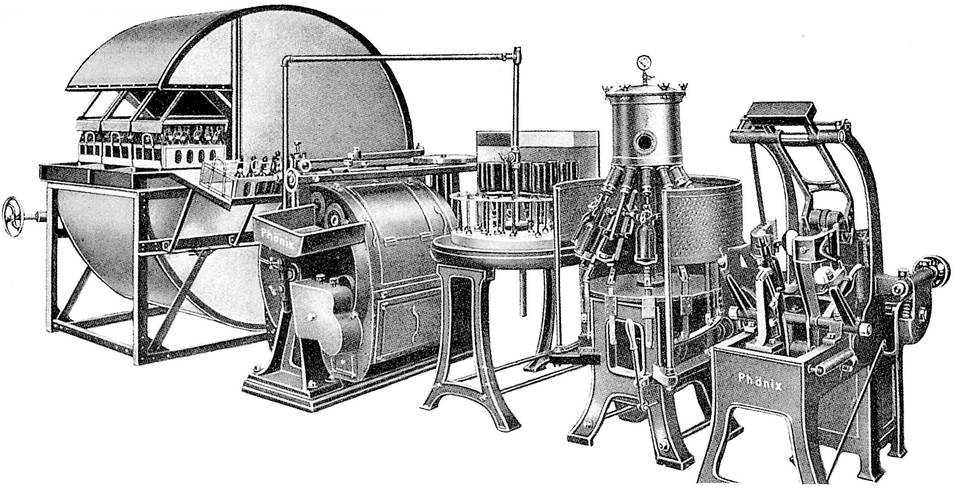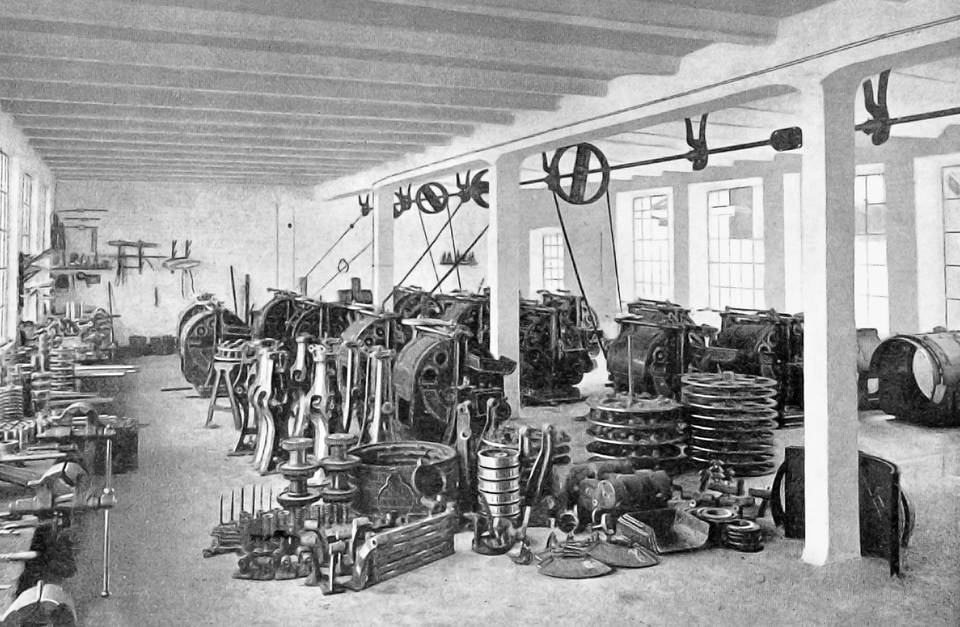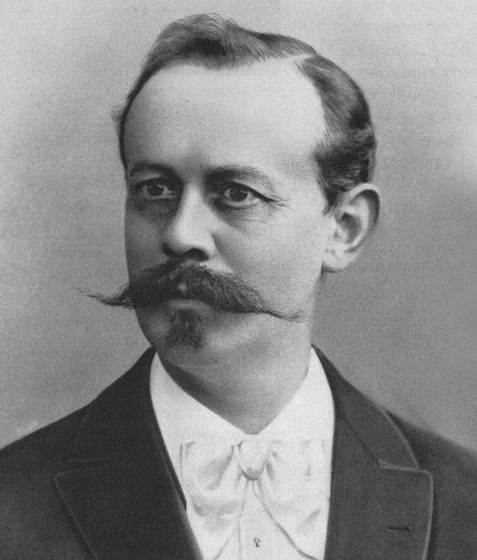From trade to manufacture
One of the companies to seize on this opportunity was Holstein & Kappert, a company which in the first almost forty years of its company history merely traded in technical equipment. The first subsidiary it set up in 1905, the Erste westfälische Kellereimaschinenfabrik Phönix GmbH, had little success, however. Fritz Kappert, who inherited the company in 1889 from his father and company founder Carl, decided to have his company make the machinery itself – under his very eyes at his new business premises on Bremer Strasse in Dortmund. The first machines were able to process about 1,000 bottles per hour. As the washing procedure entailed soaking, brushing and rinsing out the bottles, each with the help of separate units, the machinery took up a lot of space and was labor intensive: in order to run the machine at full capacity, six to seven people were needed for operation.
The beginning of the 20th century marked the rise of bottled beer. The steel and coal industry, the backbone of the German economy, was expanding rapidly. This boom also had an impact on the consumption of bottle beer which increased accordingly. With brewers initially only racking their beer in barrels, as this was easier and more lucrative for them, beer wholesalers began to emerge who filled the beverage into glass bottles. This undertaking was sometimes performed in adventurous circumstances on filling equipment which was technologically underdeveloped, with the hygienic conditions often completely inadequate. The quality of the beer treated in this manner naturally suffered greatly, harming the image of this new form of presentation. This prompted breweries, who at first only reluctantly engaged in the sale of bottled beer, to market their own filled bottles under labels marked “original brewery filling”. With this promise of quality they were able to help consumers distinguish their products from lower-quality goods – at the same time creating a giant business opportunity for machine manufacturers able to provide the necessary equipment.
In 1907 the newly merged Holstein & Kappert Maschinenfabrik Phönix GmbH produced the Kraftrevolver or “power revolver”, its first semiautomatic bottle washing and filling machine – or, if you will, an early version of today’s high-performance rotary machines.
Fritz Kappert was not actually an engineer himself; he was, however, able to contribute plenty of experience gleaned from his numerous talks with brewers and demonstrated much skill in committing a number of experts to his cause. One of these was construction engineer Carl Petersen, the first technical managing director to join the team who had previously worked in a factory which built labeling machines in Berlin. Petersen converted the horizontal machine so that what had been a monstrosity almost two meters high was now only half as tall and featured a rinsing unit. The system was now ready for market and proved to be such a vast technical improvement that it was to dominate the Holstein & Kappert portfolio in the next few decades. After just three years 100 of them had been sold; over the years more than 1,100 machines were to familiarize producers of all kinds of beverage in Europe and the rest of the world with the name Holstein & Kappert.


Extensive portfolio
To supplement its own machinery Holstein & Kappert also acted as general distributor for the Nova Practica constructed by Stuttgart machine manufacturer Göbel, a soaking machine with four chambers, each of which contained a cell wheel with bottle crates. This machine was also a commercial success: one Nova Practica was sold with almost every horizontal machine. Not long after starting its own production business Holstein & Kappert had a comprehensive portfolio of washing and filling machines which catered for various customer requirements. This included in particular:
- Twin brushing machines with an incorporated rinser for 1,000 bottles per hour
- Horizontal machines with six and ten brushing stations and a separate rinser with 45 or 60 rinsing stations for 1,800 to 2,500 bottles per hour
- Vertical brushing machines with 2 x 10 carousel-like rotating brushing stations and an incorporated rinser for up to 3,000 bottles per hour
- Battery filling machines with two and four elements for 1,000 bottles per hour
- Rotary sloped filling machines with 8 and 12 filling elements and mechanical bottle pressing for 1,000 to 2,000 bottles per hour
- Rotary cup filling machines with 24 filling stations for 3,000 bottles per hour
- Rotary bottle filling machines with a roller chain conveyor and pneumatic bottle pressing with 28 filling stations for 3,000 bottles per hour.
In a strange quirk of fate Holstein & Kappert forged its first links to Enzinger in Worms with the start of production. In 1909 the former copied faucets which the latter was using on its rotary fillers to replace the more complicated piston valves. The Enzinger original had already established itself in breweries, however; up until the First World War beer brewers only purchased soaking and washing machines from Holstein & Kappert. There were vague connections to Anker in Hamburg, too, which initially managed the exports for the Dortmund company while at the same time acting as representative for Enzinger bottle fillers. When in 1912 Holstein & Kappert presented centering bells in its first rotary cup filler for the first time, these were imitated by Enzinger and registered as a patent. Holstein & Kappert legally challenged this case of plagiarism – and won the lawsuit.























